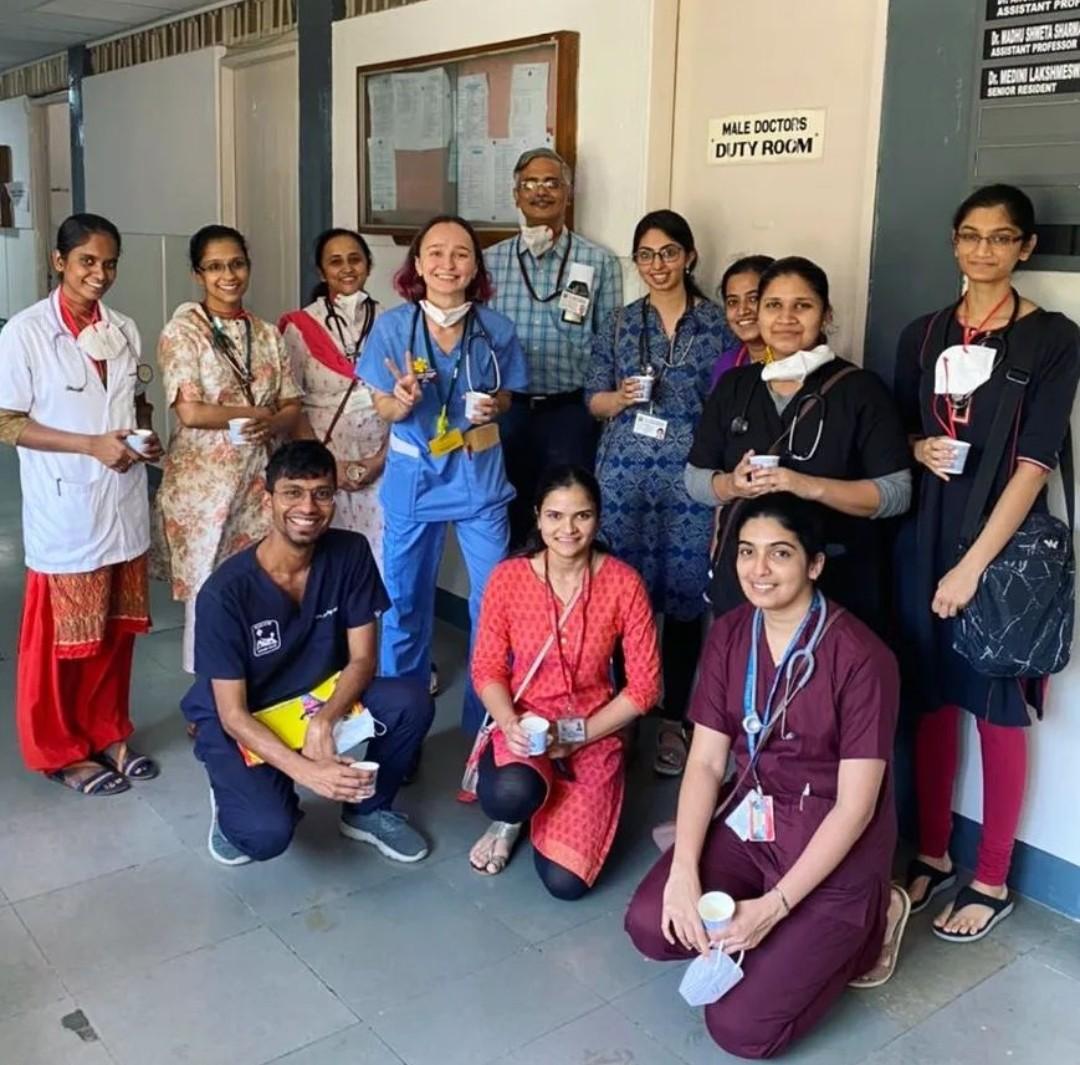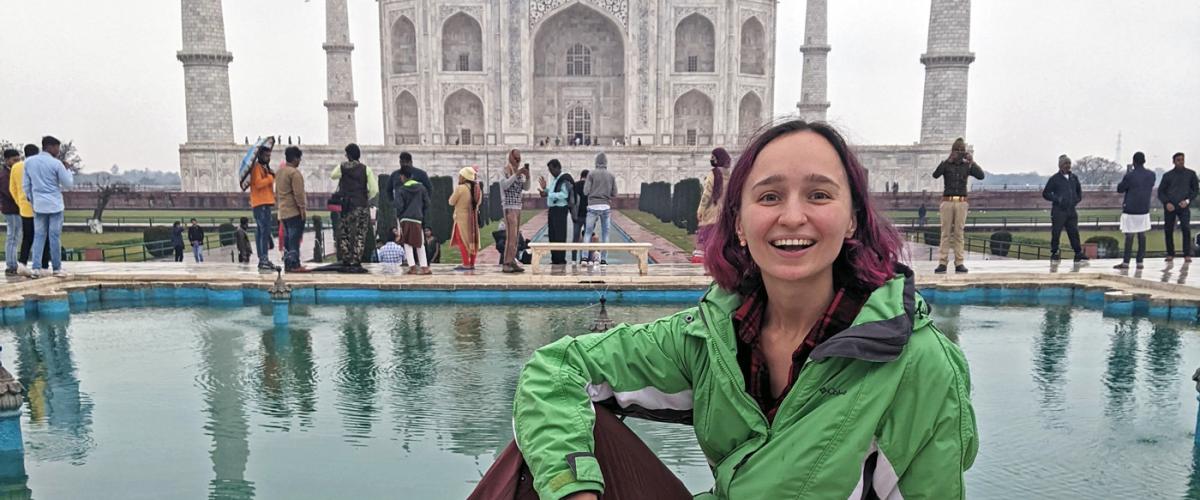Indispensable Skills and Unforgettable Experiences | GMER Reflection
Christina Daragan, a fourth-year student at the University of Minnesota’s Medical School, participated in the Global Medical Education and Research Program in 2022. Organized through the Center for Global and Social Responsibility, the program provides global health experiences for interested medical students. The future Doctor Daragan shares her experiences while participating in the program at her chosen international site: Bangalore, India.
I was very lucky to receive a GMER Scholarship to travel to Bangalore, India for a 4-week Pediatrics rotation at St John’s Medical College Hospital. I truly believe that this was one of the most valuable learning experiences in my medical career so far.
First of all, the pediatrics department offered exceptionally good teaching by the attendings and senior residents. With three pediatric teams at the hospital, each lead Grand Rounds twice a week which was one of the great learning opportunities. During Grand Rounds, a resident would be doing a full presentation of the patient, discussing in exceptional detail HPI, physical exam positive and negative findings, most recent labs and treatment. During these presentations, attendings would be asking very deliberate questions to point out missing details or question everyone’s understanding as to why a certain maneuver was performed or lab test ordered. Quite often these discussions would turn into small lectures lasting 30-40 minutes with residents reciting perfectly memorized values and protocols and the attending explaining the physiologic processes taking place. I have an entire notebook filled out with all the precious knowledge (some reviewed, some completely new to me) from those Grand Rounds.
Though rounds would sometimes take 4-5 hours to get through in such manner, I always felt oversaturated with precious clinical tidbits and essential medical knowledge pertaining specifically to the patients I saw that day. I personally love this kind of teaching—bedside, specific to the patient and condition we see in front of us which makes it stick so much better—and I hope to employ this method in the future when I will be educating medical students in the US. Maybe I wouldn’t do such a deep dive for each patient on the rounds, but I would love to pick the most valuable cases and have a number of questions and tidbits prepared in mind for my students, then assign them some quick but important topics to research on their own after rounds and do a 5 min presentation each.

Teaching continued after the Grand Rounds too. Almost daily, we had afternoon lectures or so-called "Guillotine"—case reports by PGY-2 residents that were carefully dissected by three faculty members who would comment in detail on the presentations, analyze differentials and treatment plans, and offer their final verdict of, usually, “not good enough.” I must say, I’d never want to be a resident at the Guillotine since the experience is truly humbling and intensely sweat-inducing, but being a spectator of the Guillotine is an incredible learning opportunity.
For instance, if the resident stated that they ordered a chest X-ray, they would be questioned why, what they were expecting to see, what would be their course of action depending on what they would see, and why they ordered imaging before performing other tests and maneuvers. I don’t think I’ve ever though so much about the reasoning for ordering a chest X-ray or a BMP before, but now I have a much clearer understanding of costs, ramifications, and purposes of most of the basic tests that I used to order “just in case.” After the Guillotine, faculty members would take us to the discussed patient and teach us the specifics of a thorough physical exam for that particular case making sure each of us could notice or elicit the important signs and perform the necessary maneuvers.
At St John’s, many patients were unable to pay for expensive imaging and tests, and abiding by patient’s wishes, providers would refrain from ordering non-essential tests and procedures instead diagnosing patients clinically based on their impressively thorough physical exams. Although in the US these days every other provider owns a portable ultrasound scanner, I still find it invaluable to learn how to determine whether there is fluid in the abdomen and the fluid level with just percussion and a few maneuvers. I think these skills I’ve learned at St John’s will be indispensable at any low-resource center where I might find myself in my future career.
I greatly appreciated that all the people on campus were very kind and eager to help, but outside of St John’s walls I was very obviously a white tourist with money in my pockets. Even though I was prepared to bargain and demand a fair price while traveling in India, most of the time, I ended up paying much more for products and services compared to the locals (which I learned about closer to the end of my stay in India while shopping with my new friends from Bangalore). It’s very hard to bargain down to a fair price if you don’t know what the fair price is, but since things are generally rather cheap in price, I’ve never had to pay more than I could afford to. In the end, I believe that paying the “tourist price” in India (while not being completely taken advantage of) is actually the fair thing to do, because we come there with our privilege, our wealth, and the very least we can do is share it with the people who so kindly host us in their home and share their culture with us.

In conclusion, India offered me a cultural shock I was expecting, some logistical struggles I wasn’t, and a great deal of unforgettable invaluable experiences. Besides fantastic education from the Pediatrics Department at St John’s, I got to enjoy tons of delicious Indian food, fall in love with the culture, make numerous wonderful new friends, navigate a different medical system, and learn to adapt and ask for help when facing inevitable roadblocks while living and studying abroad.
—Christina Daragan
Learn More About the Global Medical Education and Research Program
Interested in GMER? Find out more about the program.
Global Medical Education and Research Program
Our interdisciplinary center works across the University of Minnesota’s health sciences to build on the legacy of a number of individual programs dedicated to connecting the University to the world. Support future GMER students by making a gift to CGHSR
